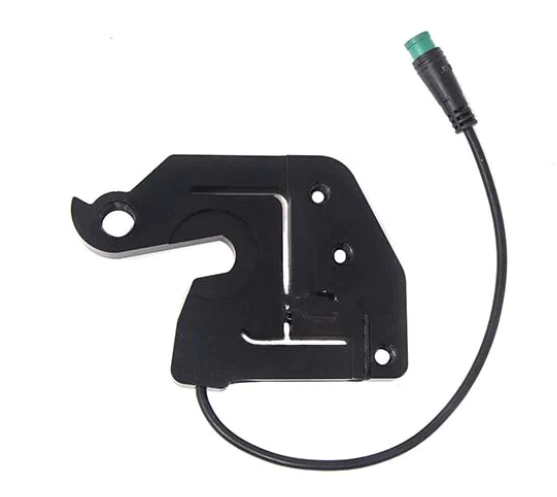S2E1: How do power-assisted e-Bikes work?
Introduction
I first used power-assisted electric bikes during my summer internship in 2018. The public Ford Go bikes were the solution to my daily commute. I didn’t exactly know they worked back then. But now I know, and so do you!
We’ll be discussing the kind of electric bike where instead of twisting or pressing a throttle to activate your e-bike motor, you just start pedaling and the motor will power up automatically. When you pedal harder, then an electric motor provides additional torque proportional to your effort. There are other electric bikes that give you power assistance once you simply start pedaling irrespective of how hard you pedal.
But I chose to explore the former as it’s more technical, feels more natural to use, and will help you imagine how other kinds of electric bikes work on your own. There are countless models for power-assisted electric bikes, and the following is a prevalent variation. Let’s jump in!
Hardware Components
Crankset: Two crank arms are mounted on either side of the bike at 180 degrees to each other, connected by an axle. Basically, you operate the bike using the pedals mounted to the end of these two crank arms.
Electric motor: Brushless DC motors are housed in the hub of the rear wheel of your e-bike. The motor provides additional torque for the wheels, thereby assisting the rider by adding effort in rotating the wheels. The torque generated by the motor is proportional to the amount of current flowing through the motor. This is the model of a brushless DC motor. Torque = Torque Constant * Current
Control unit and battery: The battery enables the motor to function. And the control unit involves a microcomputer that performs the algorithm and operations to decide the level of power assistance needed for the rider. These are typically placed on the rear end of the bike on the top.
Torque Sensor: Measures the torque with which the rider is pedaling to determine how much electric power is needed to assist the bike. The harder you pedal, the more power is commanded to be given by the motor.
Rotation angle sensor: An absolute-type rotary encoder to detect the crankset’s angular position at any given time.
Gyroscopic sensor: Detects the tilt (orientation) of the bicycle frame to the sides, and in the fore and aft direction.
Estimating Pedal Force
Torque sensors are used to compute the force we apply on the pedals.
As you start pedaling, a plate attached to the rear wheel hub flexes, and the torque sensor detects this flex which is then converted into electrical signals based on the deviation. The more force you apply on the pedals, the more the plate flexes. It’s a precision strain gauge system, so it can tap the minute changes and map them into electrical signals. Thus, the harder you pedal, the higher the strain on the plate, and the larger the torque value detected by the sensor. This implies a larger pedal force!
Figure 1: Torque Sensor
If you’re interested in watching a video of how it’s installed on an electric bike, here you go - https://www.youtube.com/watch?v=iYZQMQJsz1E
How does Power-Assist work?
Once you start riding, the algorithm running in the control unit constantly monitors the pedal force information it receives from the torque sensor. Once it detects a force more than a prescribed threshold, the motor is commanded by the control unit to provide power assistance. The harder you pedal, the more assistive torque the motor provides to the wheels (more current flows through the motor). The less intense you pedal, the motor will output lesser power. But there are some caveats!
What if you’re pedaling harder but in the reverse direction? If you’re back-pedaling harder, the motor should logically supply power assist because the pedal force is higher. But this is not desirable, right? So we make use of the rotation sensor. This detects if you’re pedaling forwards as it can measure the angular position of the crankset in real-time.
If we see a negative difference in the angle of the crankset over a period of time, then we can be sure that the rider is backpedaling. So the power assistance is disabled if you don’t pedal (no change in the crankset’s angular position), or if you’re back-pedaling.
There is a maximum threshold for the power assistance provided by the electric bike. So beyond a point, it doesn’t matter if you pedal harder.
The motor provides additional torque for a short duration once the conditions are satisfied. And this entire process repeats!
What if the bike is tilted?
The gyroscopic sensor can detect orientations. So if the bike is titled to the sides, like while performing a turn, the power assist may be weakened as we don’t want to power the bicycle further as it could affect the stability. But while going uphill, the pedaling assist may increase as we expect more support going against gravity. Also, if the voltage sensor detects a reduction in the battery voltage, the power assist is weakened to prevent excessive battery discharge and extend the lifetime. This is how power-assisted e-Bikes work!
Thank you for taking the time to read my blog post. If you liked what you read, consider subscribing to my newsletter for exclusive content and understand how a gadget works in only 3 minutes, sent directly to your inbox every Wednesday. We'd love to have you as a part of our community. Also, if you found this post to be informative or enjoyable, please share this with your friends on social media. Thank you!

